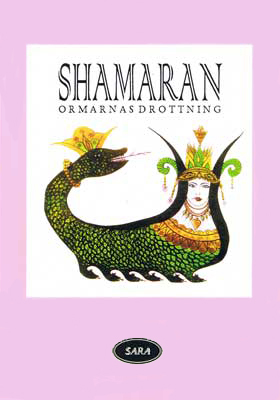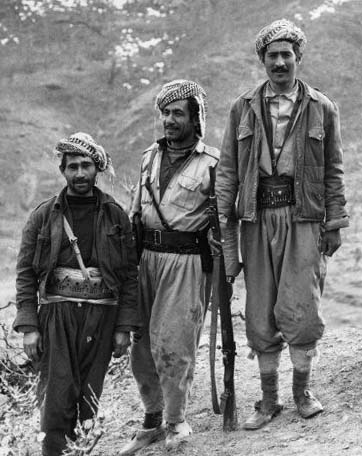The dynasty which ruled about 50 years, was subsequently succeeded by another related Kurdish dynasty, the Hasanwayhids.
Aishanid or Aishiya dynasty
Aishani or Aisani was a Kurdish dynasty that ruled 912-961 A.D. (300-350 A.H.) over western Jibal, such as Dinawar, Hamadan, Samghan etc. in what is today known as Iranian Kurdistan as well as parts of Iraqi Kurdistan. Among the best known kings of the dynasty are Wandad, Ghanim and Daisam.
Shameran

It's name literally means ''king of the snakes''. Shameran is thought to have an anthropomorphic figure with a female head on a snake body, the way she is often depicted and her pictures are traditionally hung on bedroom walls of Kurdish girls.
Shameran which can be compared with the Greek ''Mermeid'', exactly corresponds with the snake-legged goddess of earth, Api (see here), in the Scythian (ancient Kurds) mythology.
Other spellings of the name include: Shamaran, Shahmeran, Shahmaran and alike.
The Hurro-Urartian Substratum in Kurdish (1)

The toponyms are generally conservative and give insight to the human history of the region when it comes to possible linguistic influnce or shifts.
It has long been shown by scholars that significant portion of Kurdish toponymy originates from Hurro-Urartian; examples are ''Barzani'' which was name of a Hurrian god; or Kurdish clan names ''Zibari'' from ''Sippar'', ''Musuri'' from ''Musri'', or name of ''Ziwiya'' from ''Zibiya'' ( capital of Hurro-Urartian kingdom of Manna, south of lake Urmia), name vally of ''Harir'' from ''Kiruri'', and dozens other place names and hydronyms such as Xabur, Van, etc. To these also must be added the name of 'Kurdistan' itself in Kurdish (endonym), i.e. ''Kurdawari'','' awari'' being the Hurrian word meaning ''land, field''.Name of the Kurdish village ''Roboski'' is a remnamt of the name ''Eribuski'', the golden eagle of Teshup.
But so far there has been no effort to look into Kurdish vocabulary to analysis thousands of words with no etymology relating them to Iranic (IE), Arabic (Semitic) or Turkic (Altaic), but with clear Hurro-Urartian cognates.
(See also Urartian morphology and Kurdish)
(See also Urartian morphology and Kurdish)
Labels:
Kurdish history,
Kurdish language
Subscribe to:
Posts (Atom)
